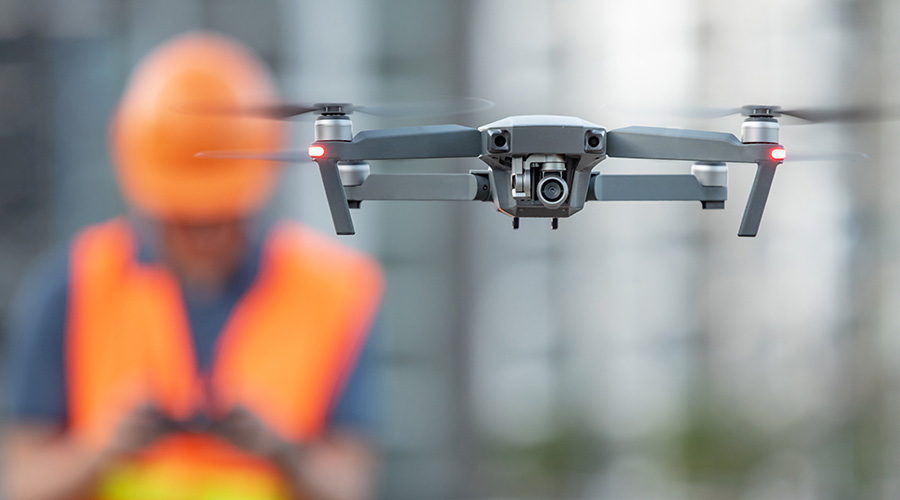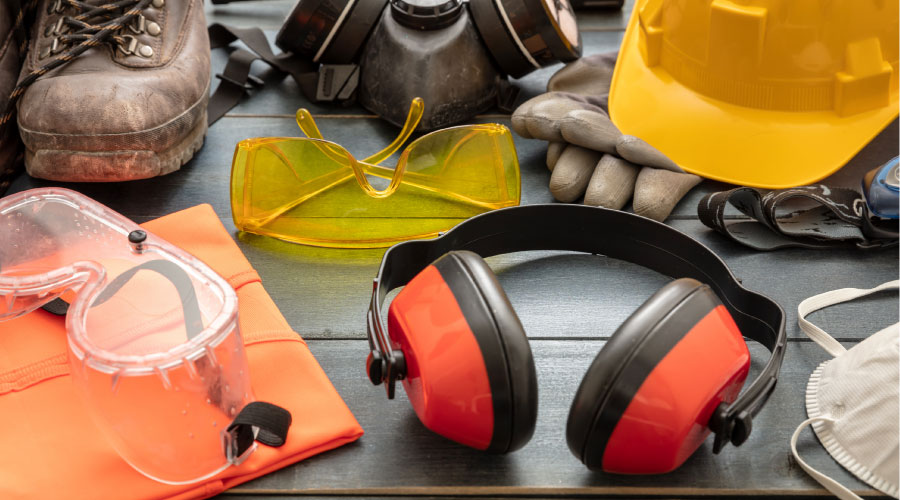Drones Take Flight for Facility Inspections
Facility managers can safely gather essential data on facility conditions without ladders or lifts
Drones have changed the way many maintenance and engineering managers think about facility inspections. Prior to drones’ arrival more than a decade ago, managers looking to gather information on the condition of roofs, facades, windows and doors resorted to sending technicians up on ladders, scaffolding and mobile elevating work platforms (MEWP).
With drones, however, managers and technicians could stay safely on the ground while the machines flew wherever directed to gather images of hard-to-reach areas of facilities. New-generation drones have taken those capabilities and expanded them, using technology advances that make drones even more appealing to managers trying to maximize the condition and performance of their facilities.
Expanding applications
The traditional applications for drones in and around institutional and commercial facilities related to visually inspecting roofs, facades, windows and doors. As organizations have investigated their use, the applications have expanded. One such application involves investigations into leaks in steam or chilled water systems, especially on large campuses with distributed underground piping networks.
“One hospital that we work with had been looking for a steam leak,” says Tracy E. Wagoner, senior preconstruction manager with Henderson Building Solutions. “They knew they were losing steam but did not know where they were losing it. They had been looking for it with other methods for a month.
“We were able to go in with a drone and did not have to vacate parking lots or inconvenience the facility at all. Within a couple of hours, we had the leak pinpointed down to within 8 inches of the actual leak.”
Managers also have put drones to work assessing damage to facilities from severe weather.
"There is a clear benefit of drone inspections in the case of storm damage because of the speed of response, the ability of the drone platform to provide good analysis of the roof condition is, what condition of installed equipment is on roof or on hardscape,” says Rajat Malhotra, executive director and global lead for engineering operations with JLL. “If there is a storm and there is storm damage, you would deploy drones quickly to get an assessment of what the scope of work could be to restore that facility.”
Malhotra also spotlights a drone application related to security — in this case, perimeter security for large warehouse complexes.
“Intrusion-detection systems were already in place, but once an intruder is detected, and since the area is large, how quickly you respond with the security staff or workforce being able to reach that location is determined by the distance the intrusion occurs from where you are headquartered,” he says. “The response time with a drone is really quick, and it acts as a solid deterrent. If you have an intruder and the drone is flying overhead, the intruder knows that he or she has been detected.”
Advances in drone technology
For managers who have not looked into drones in recent years, they will find a host of advances that expand the potential appeal of the units for a range of applications. Not surprisingly, artificial intelligence (AI) has made its way into the process of drone inspections.
“First and foremost is the controls technology with autonomous flight and AI,” Wagoner says. “It allows the drones to fly in closer to get much better images of the facilities. They can also get into areas where before it was even difficult for a drone pilot to get to with the better sensors, and the AI can actually make a decision for the pilot where it can get closer to air handlers.”
AI and analytics have improved the inspection product.
"The exciting evolution of technology has been more on artificial intelligence and analytics in drone platforms,” Malhotra says. “The magic really happens when the analytics are enabled against those images — the automation and digitization of the report out.
“You have technology platforms available that can take all of those images and analyze them and give you an exact view of what the defects are and what could be the investment to make good those defects. All of those smarts have been built into the AI platform that goes along with the high-resolution images.”
Wagoner also points to the expanding equipment package available on drones, including more power cameras, such as 4K, 6K and even 8K cameras.
“The ability to see what is literally going on in real time has just jumped up dramatically,” he says.
New-generation drones also increasingly incorporate infrared imaging systems and, soon, light detection and ranging (LiDAR) technology.
"LiDAR builds out 3D images or renditions of an area that is surveyed, so that has some interesting use cases in facility management and in project management,” Malhotra says. “If you use LIDAR, for example, to assess roof units for post-storm damage, that can give you great qualitative data to go with, and you can properly assess what the scope of work for restoration would be. We should be seeing in the next two to three years some use cases emerge on application of LIDAR as a combination with drones.”
Related Topics:













